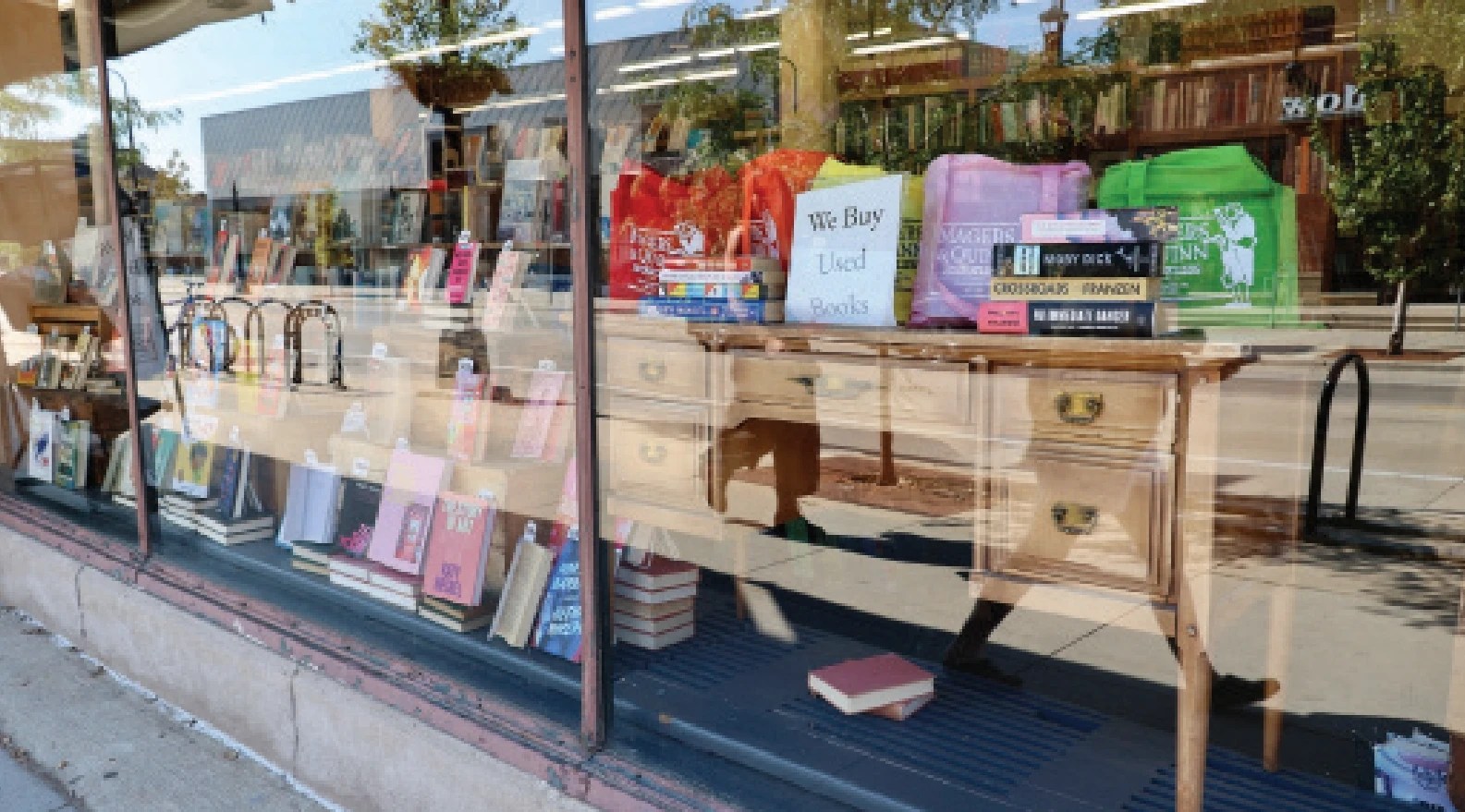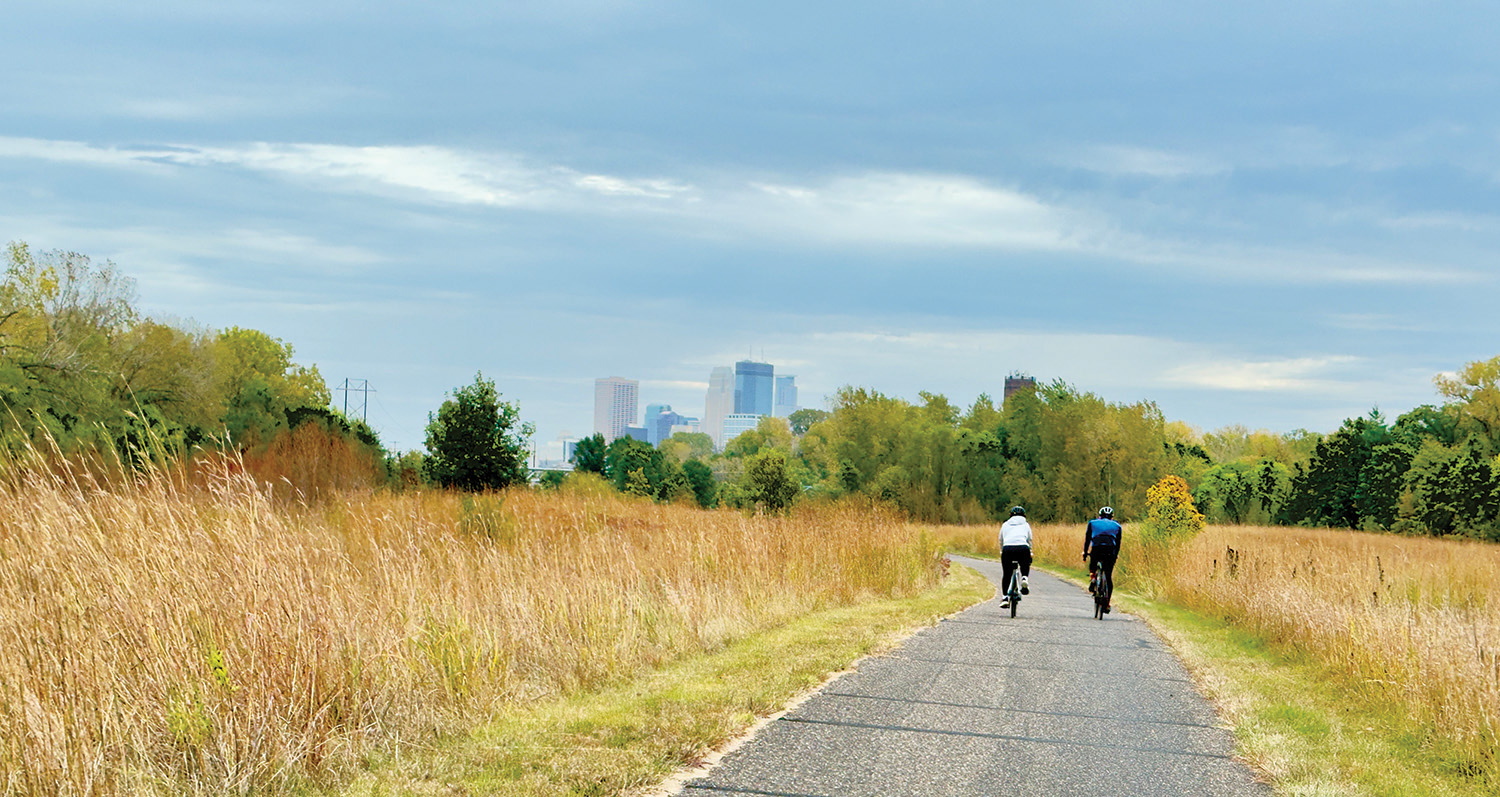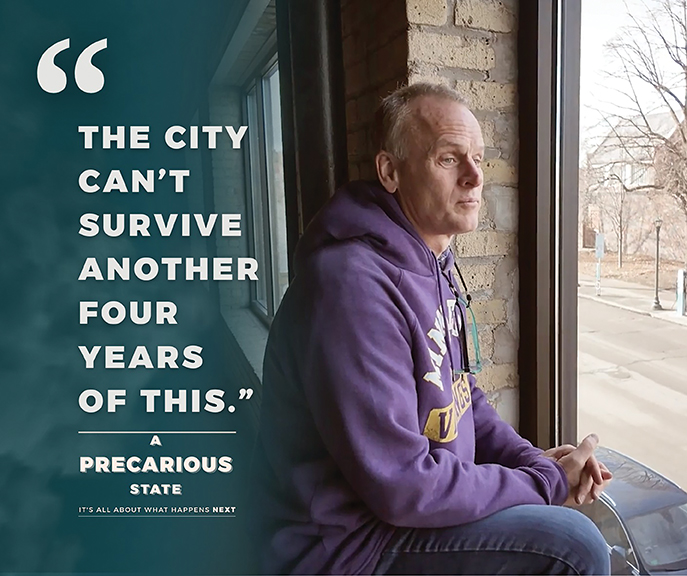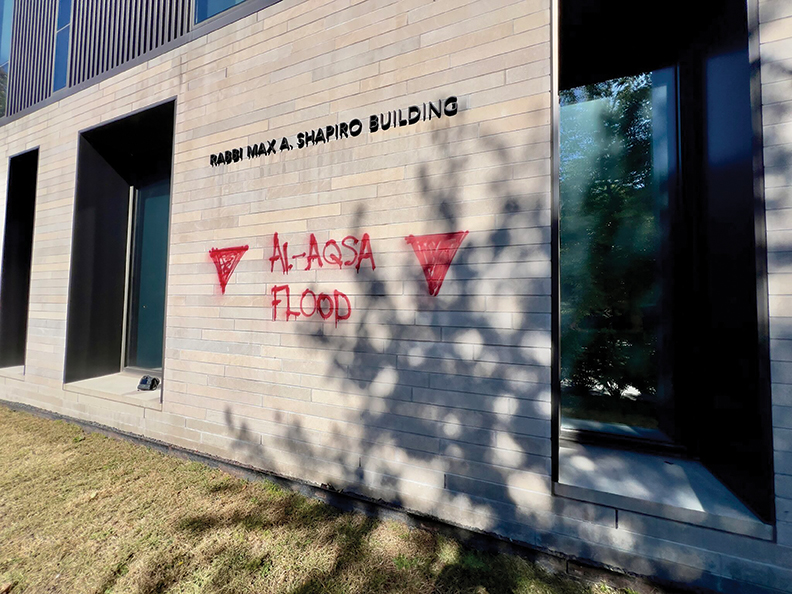Birchbark, across the street from Kenwood School, is owned by author and neighbor Louise Erdrich, and is a jewel box of delights — stacks of books with staff recommendations penned above them, glittering beadwork and birchbark baskets and the scent of braided sweetgrass in the air.
Magers & Quinn is the sprawling discount book emporium on Hennepin Avenue between Lake Street and 31st Street. Because I’ve been talking with businesspeople in Uptown lately to learn about the challenges they are facing, it was time to talk Denny Magers, its owner.
What I imagined would be a quick visit to ask a few questions turned into a conversation as expansive and interesting as the building that houses his business.
Some History
The building, built in 1921, was originally a Chevrolet dealership, with cars on display in the front showroom and repairs handled in the back. A large overhead door opens onto the alley, and the original elevator that hoisted cars among the three floors is still in operation, one of two elevators of this vintage left in the city.
When the dealership moved on, the Minnesota Driver and Vehicle Services moved into the front of the building, and a printing business set up shop in the back. When the department left it became a secondhand store operated by the Junior League, and then in 1994 it became Magers & Quinn.
Magers & Quinn is named for Denny Magers’ parents, his father being the Magers and his mother the Quinn. His father was an engineer, and his mother was “a mom” with an enormous curiosity. “She’d grab a book whenever there was something she wanted to know more about.”
After college, Denny went to work for Plywood Minnesota and eventually became a vice president there, helping that business grow to become an 80-store chain. After leaving Plywood Minnesota he started an import-export business. Unrelated to his business, he had a chance to buy a trailer-load of used books. “After I bought them, I thought, ‘OK, now what are you going to do with them?’”
On his next trip overseas, he cold-called some used book dealers in London and Dublin to see if they were interested in his cache. “I don’t know if I was a good salesman, or I just appeared honest,” he says, but they were interested. Later, when the dealers went through the books, they told him which were good, and which were trash. “That got me started.”
He continued in the export business but kept buying more books along the way and shipping them to dealers.
In the early 1990s he saw that a bookstore near the University of Minnesota was going out of business so he went over to see if there were some books he might buy. “Three days later I was in the retail business.”
He took over the shop and increased sales, but eventually decided he wasn’t interested in continuing at that scale: “I’m a book person, but also a businessperson. I said either I get bigger or I’m moving on from this venture.”
His decision to get bigger brought him to Uptown.
Originally the store only sold used books and remainders, primarily in the front showroom, but as the business grew it expanded into what once was the repair shop, and later the print shop. “I left things the way they were in this building. The decoration isn’t the most important thing, it’s what’s on the shelf. And I think most peo ple get it and like it that way. “
In response to customers’ requests, he eventually began to carry new books. He still sells all books at a discount, from 10% on new books, up to 50% on used books and remainders — the name for publishers’ stock that’s been around a while. When I asked how he can afford to do that he replied, “It’s not easy!”
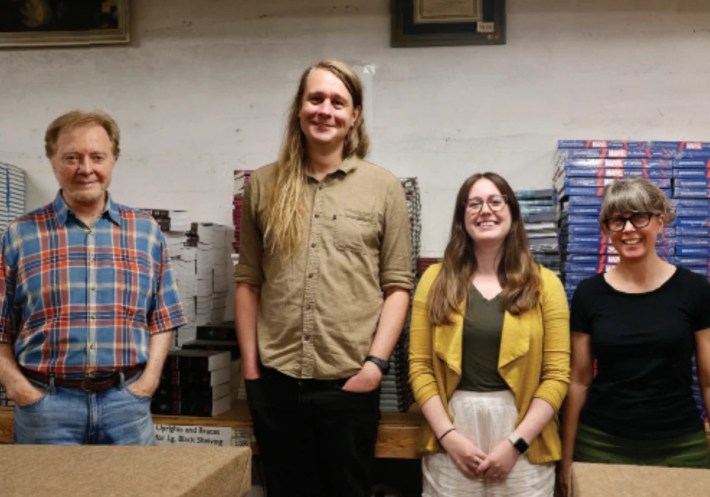
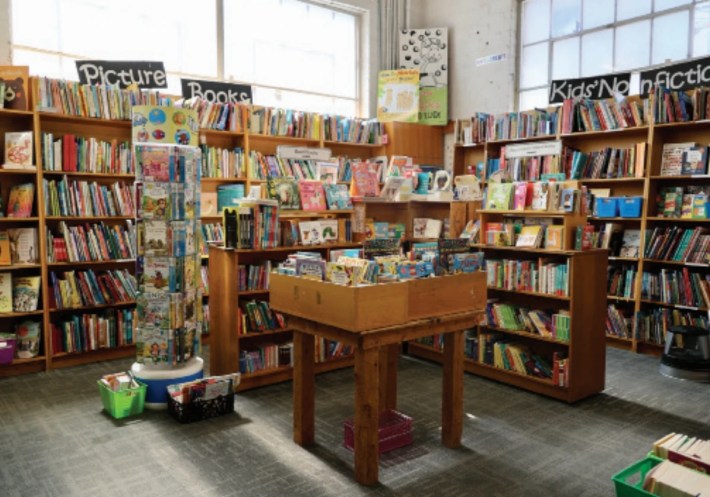
The Business
The business has become more complicated. It has grown since 1994 and now employs roughly 40 people.
Two of those employees, Jessi Blackstock, the store manager, and Annie Metcalf, the events coordinator, joined us as we wound our way through aisles and tables loaded with books.
The books come primarily from three sources — new books from publishers, used books bought back from the public, and remainders and publisher returns. The revenue also comes from three main streams: instore sales, website orders and outside sales, which is sales to other businesses, libraries and schools.
Magers & Quinn also partners with a myriad of local organizations including neighborhood schools, the Women’s Prison Book Project and Children’s Minnesota hospital to name a few. They host over 150 author book events both in-store and offsite and handle the book sales for series like Pen Pals and Talking Volumes.
The first-floor houses retail books and is home to frequent readings. It’s stocked with around 100,000 new and used books as well as cards, gifts and assorted literary merchandise.
The basement warehouse, where incoming pallets of books are delivered via that vintage elevator, holds over 200,000 volumes, as well as the desks and tools of the employees who sort and process the books and prepare online orders for shipping.
The entire inventory is now available on the Magers & Quinn new website, magersandquinn.com, along with the inventory of Ingram, the largest book distributor in the country, which makes more than 10 million titles available.
This means you can order from home “in your pajamas,” Denny says, “and pick it up at the back door, or have it delivered.” Shop locally!
It's a labor-intensive business with every book getting handled by an employee 12-14 times before it goes out the door. “There’s no way to automate that,” says Denny. “You can automate the inventory system, but not all the physical processing of the books.”
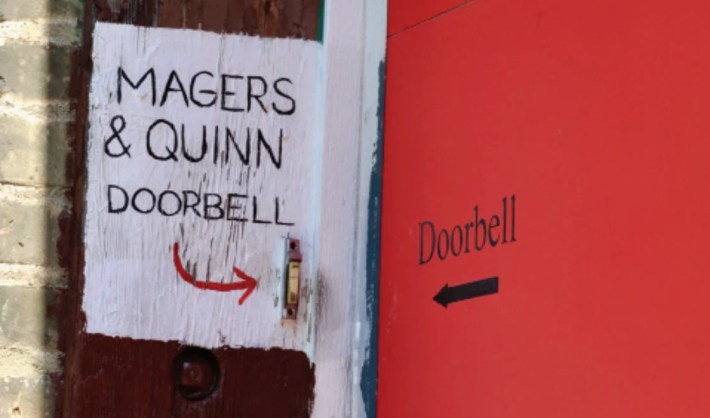
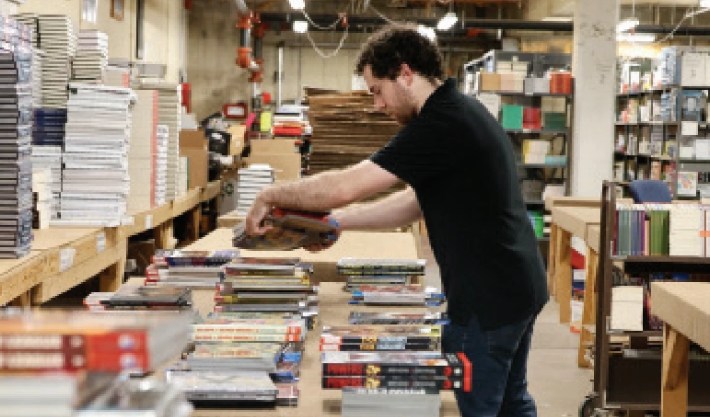
The New Normal
So how is business playing out in light of the pandemic, the aftermath of the George Floyd murder, reports of crime in Uptown and the removal of on-street parking?
Customer support during Covid was terrific. The “clunky old website’” got them through.
And average sales are up a bit over last year. “Despite what’s going on,” Denny says. “It makes me think how much better business would be if things were normal. And if we had parking.”
What is Normal?
More shops doing business on the street would add to the “normal” feel. They point to hopeful signs that things are turning around, like the men’s clothing store, Scout, that has opened next door.
The chain stores that came and left did Uptown no favors, Denny says. “This area would be much better served by a lot of independent unique shops.”
As for crime? Nothing much has changed. “There’s always been some shoplifting, and it’s still mostly the same old stuff.” They laugh as they relate the things they see. “Please don’t write on the pages of that book.” “Please put your top back on.”
“It’s more a perception of crime than a reality,” says Denny.
When it comes to parking, they agree that on-street parking offered convenience and gave a feeling of activity, something that is now missing on the block. Jessi and Annie suggest the ramp behind Seven Points, the former Calhoun Square, as an alternative. “It’s right there. But it’s expensive.”
When Denny mentions that the ramps at 50th and France, a much healthier commercial area, are owned by the city of Edina, and free, we all chime in. “Minneapolis should buy the ramp! Put solar on top! Add charging stations! Make it affordable, even better, free!”
But Denny says that on-street parking is also important. “To bring in customers you have to make it convenient to the general public, not just to the diehard book person who will come in no matter what.”
Later Denny and I talk about the bottom-line effect of the changes in Uptown, the decreasing foot traffic, the lower value of the buildings, and, of course, the taxes that don’t reflect those changes. He splits the real estate taxes with his landlord, and last year his share was $70,000. “That’s a lot of paperbacks!” he says.
Magers & Quinn is still getting by but clearly things could be better. “We, and all the other merchants in the neighborhood, need larger numbers of customers in order to survive, and current city policies don’t acknowledge that. We are competing with the convenience and free parking available almost everywhere outside the city.”
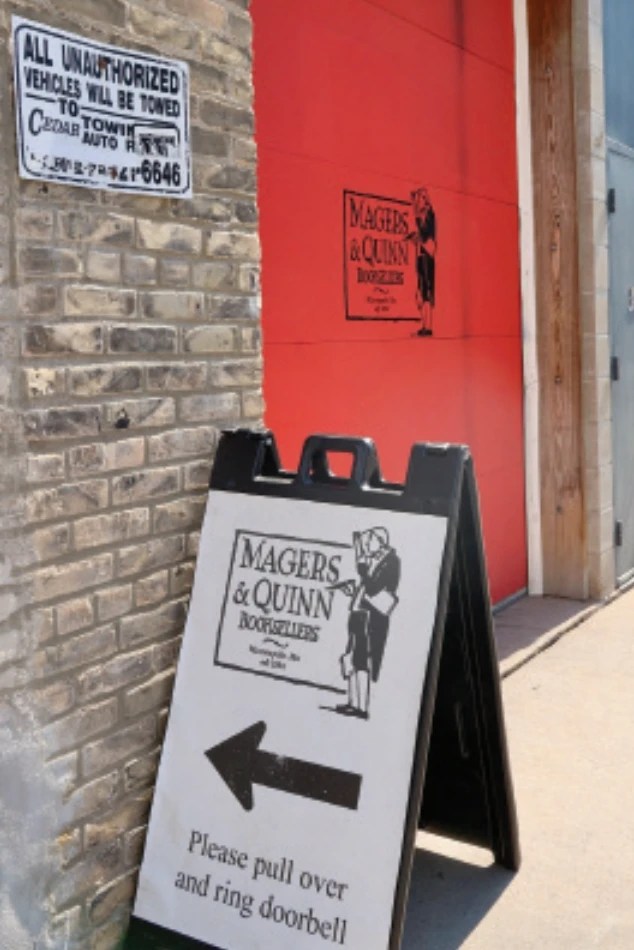
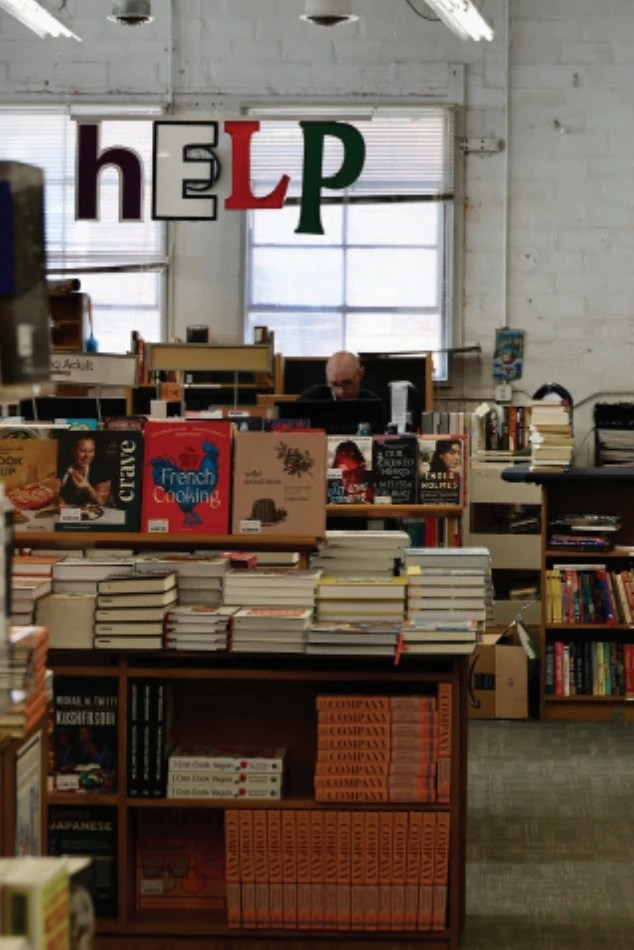
My Takeaway
As I walked to my car, three blocks away on a residential street that many people now use for parking, I thought about the irony of Magers & Quinn’s being housed in a building built to sell cars, in a city now determined to do away with most of them. And the impact that is having on his business as well as the rest of Uptown.
Carbon is killing our planet, but prohibiting cars is killing our local businesses. We should change the kind of cars we drive, not just the streets we drive them on.
If people value a unique, thriving commercial area in their neighborhood, then the city should be trying to accommodate the merchants by providing a safe environment and not putting roadblocks in the way of customers who want to support them. Current policies are strangling the traffic flow and not allowing customers to park once they arrive. “It’s pretty simple,” says Denny. “No customers, no stores and no restaurants.”
